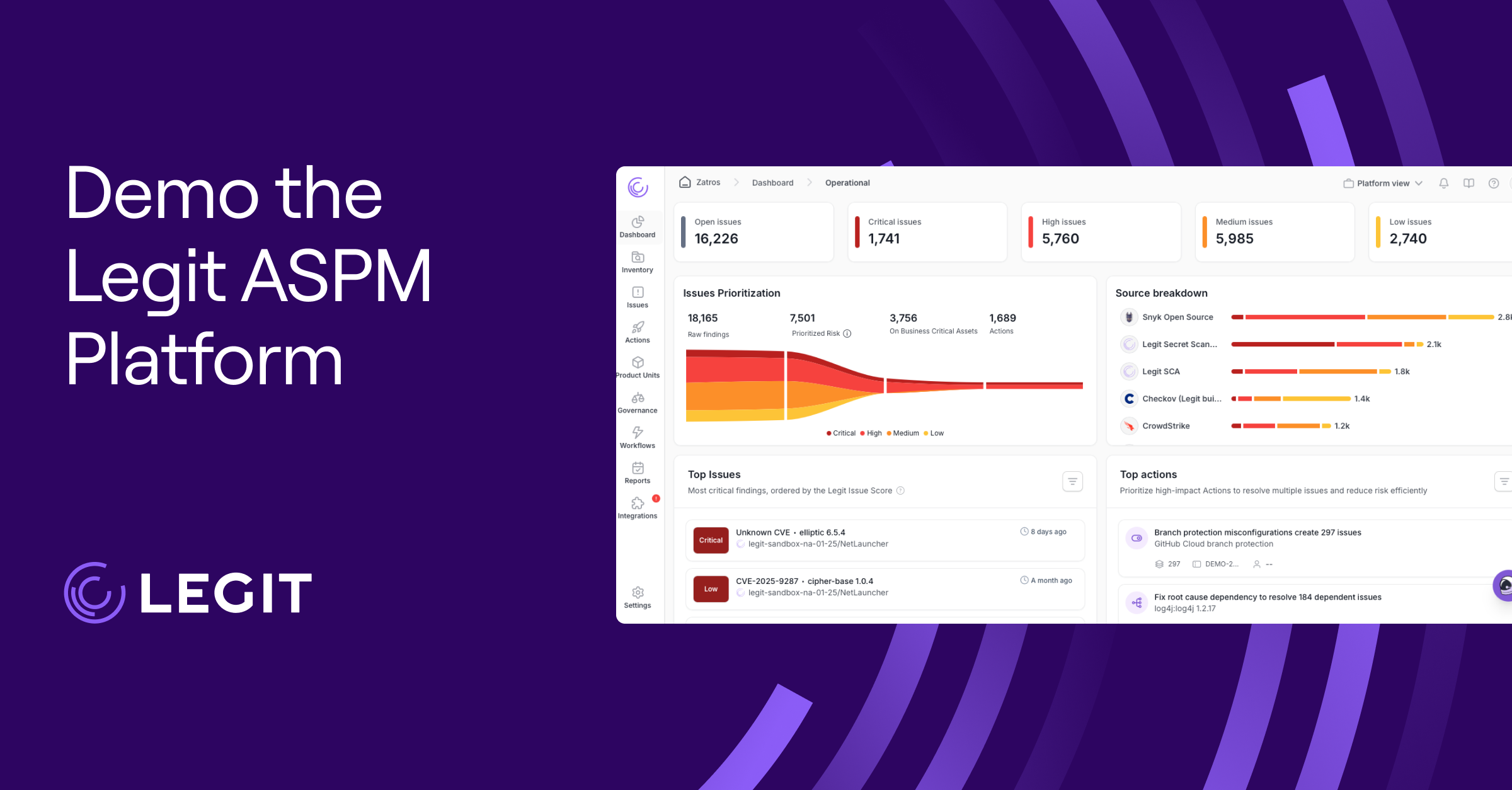Manual infrastructure management doesn’t scale, whether you’re in the cloud or on-prem. It’s slow, error-prone, and nearly impossible to audit or replicate consistently across development and security teams. That’s where infrastructure as code (IaC) comes in.
Modern IaC tools let you define, deploy, and manage infrastructure through code, improving speed and visibility at scale. This guide to IaC tells you why it matters and which IaC tools stand out if you want to simplify cloud management.
What Is Infrastructure as Code?
IaC manages and provides infrastructure using code, not manual processes. Teams write scripts that define the desired state of their infrastructure—servers, networks, storage, and more—and then use automation to deploy and maintain it. This codified approach leads to faster provisioning and consistent environments across development, staging, and production.
IaC is at the heart of modern coding infrastructure strategies. It offers a single source of truth for how environments should look and behave, making it easier to manage changes over time. Most IaC tools support declarative models, where you define the result, or imperative models, which let you script each action step-by-step.
IaC also plays a significant role in DevOps workflows, letting security, engineering, and operations teams collaborate on infrastructure changes like they would on application code. That’s why it’s a core part of broader DevOps security initiatives to modernize software delivery.
What Are Infrastructure as Code Tools?
IaC tools are software platforms that automate how you define, deploy, and manage infrastructure using code. Instead of manually provisioning servers or setting up networking from a console, you write code describing the infrastructure and let the tool handle the rest. These platforms transform infrastructure into something testable, repeatable, and version-controlled using configuration files to define environments.
There’s a wide range of IaC software out there, each offering different strengths depending on your environment and workflow. Declarative tools like Terraform or CloudFormation focus on the desired end state, while flexible options like Pulumi build infrastructure using familiar programming languages.
These tools also fit directly into modern pipelines. If you’re exploring IaC in DevOps, understand that it involves bringing infrastructure into the same automated, collaborative workflows used for application development. IaC tools also support efforts to secure software development best practices, helping you shift security left and treat infrastructure with the same rigor as code.
Benefits of Infrastructure as Code Tools
Choosing the right IaC tools is about what you unlock once infrastructure becomes code. Here are some key benefits of adopting IaC at scale:
- Faster deployments: IaC tools automate infrastructure setup, allowing you to launch environments quickly and reduce delays across the pipeline.
- Consistent infrastructure: Build every environment from the same template to reduce errors and configuration drift.
- Lower operational overhead: Automating repeatable tasks frees up time, reduces mistakes, and helps teams scale more efficiently.
- Stronger compliance and visibility: Version-controlled templates and integration with source control provide clear audit trails. These practices support tighter vulnerability management and more secure pipelines.
- Scalable and recovery-ready: The best IaC solutions scale across environments and speed up disaster recovery by reusing known-good templates. Many also support application security testing directly in your CI/CD flow.
15 Popular Infrastructure as Code Tools
With dozens of IaC tools, it’s not always clear which one fits your team’s workflow. Some tools prioritize speed and flexibility, while others focus on scale, governance, or deep cloud integration.
Here are 15 standout IaC tools worth knowing, whether you're just starting or scaling complex cloud environments.
1. Terraform
Terraform is a widely adopted IaC tool from HashiCorp (an IBM company) that supports all major cloud platforms. It defines infrastructure using a declarative configuration language and includes a powerful module system for reusability.
However, as of its switch to the Business Source License (BSL 1.1), Terraform is no longer fully open source. If you prefer open-source licensing, OpenTofu is a popular community-maintained fork under the MPL 2.0 license—offering similar functionality with fewer restrictions.
2. Pulumi
Pulumi stands out by allowing you to write infrastructure using general-purpose languages like Python, TypeScript, and Go. It’s great for developers who want more control and flexibility while benefiting from IaC workflows. Pulumi supports all major cloud providers and integrates directly into CI/CD pipelines.
3. AWS CloudFormation
CloudFormation is Amazon’s native IaC solution. It lets teams define Amazon Web Services (AWS) resources using JSON or YAML and preview changes before deployment. With deep integration into the Amazon ecosystem and rollback options, it’s built for teams operating entirely within AWS.
4. Azure Resource Manager
Azure Resource Manager (ARM) templates provide Microsoft Azure users with native infrastructure automation. They support role-based access control (RBAC), tagging, nested templates, and parallel deployments, making them a strong option for managing large, organized cloud environments within Azure.
5. Google Cloud Deployment Manager
Google Cloud’s native IaC tool uses YAML or Python to provision and manage Google Cloud Platform (GCP) resources. It integrates directly with the GCP console and lets you preview infrastructure changes, making it a convenient choice for teams fully invested in Google Cloud.
Keep in mind that Google has announced this tool’s deprecation as of December 31, 2025. It may still be used in existing workflows, but it’s not recommended for new projects. Consider alternatives like Terraform or Pulumi for future deployments.
6. Ansible
Ansible is a configuration management and orchestration tool by Red Hat. It uses YAML-based playbooks and operates agentlessly over SSH. Ansible excels at automating software installation, updates, and server setups, making it ideal for streamlining repeated tasks across environments.
7. Chef
Chef uses Ruby-based "recipes" and "cookbooks" to define the state of infrastructure. Its power and flexibility make it a great choice for complex environments. It also supports policy-as-code and integrates well with CI/CD workflows, though it has seen some user migration to alternatives like Ansible.
8. Puppet
Puppet uses a declarative model to define infrastructure state and automatically correct drift. One of the most mature IaC tools, it has strong multi-cloud support and an active module ecosystem. This makes Puppet particularly well-suited for organizations prioritizing compliance and control.
9. Crossplane
Built on Kubernetes, Crossplane lets you manage infrastructure using Kubernetes-native APIs. It extends your cluster’s capabilities and offers standardized control across cloud providers, making it a good fit for Kubernetes-centric environments that need IaC without leaving kubectl.
10. Vagrant
Vagrant focuses on creating consistent development environments using lightweight virtual machines. It's ideal for developers who want to spin up local environments quickly and share reproducible setups across teams, often paired with tools like Docker or VirtualBox.
11. SaltStack
SaltStack—now part of VMware—provides event-driven automation for infrastructure and security. This tool is great for real-time response to changes, and its Python-based setup makes it easy to manage large, complex environments with both agent and agentless modes.
12. Spacelift
Spacelift builds on existing IaC tools like Terraform and Pulumi, adding policy-as-code, approval workflows, and role-based access controls. It’s designed for secure, team-oriented infrastructure management with tight GitOps integration.
13. Checkov
Checkov scans IaC templates for security and compliance issues before deployment. It’s used alongside other tools like Terraform and Kubernetes to catch misconfigurations early, supporting shift-left practices and better governance.
14. Infracost
Infracost integrates with Terraform to estimate the cost impact of infrastructure changes before they’re applied. It helps teams stay on budget by providing cost breakdowns at the resource level and supports AWS, Azure, and GCP.
15. env0
env0 adds a management layer over existing IaC tools, making controlling variables, budgets, and access policies easier. This makes env0 ideal for teams that want more governance over cloud resources without reinventing their IaC stacks.
Protect From Infrastructure as Code Vulnerabilities With Legit Security
Misconfigurations in IaC tools and templates can create significant security gaps, exposing cloud environments or triggering costly misdeployments. These risks often go undetected in legacy security programs not built for fast-moving, automated DevOps pipelines.
Recent research from Legit Security and TechTarget’s Enterprise Strategy Group shows that outdated approaches fall short. Legit closes that gap by scanning infrastructure code, enforcing security policies, and monitoring your entire CI/CD pipeline—so you can confidently ship and stay secure by design. Request a demo today.
Download our new whitepaper.


